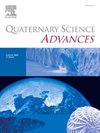Ground deformation is a widespread phenomenon that accelerates due to anthropogenic land development. Thus reclaimed/created land is more vulnerable to deformation and subsidence, especially in mountain areas. Advanced Differential Synthetic Aperture Radar Interferometry (A-DInSAR) can be used to monitor such projects. The Pakyong Airport is an engineering feat, constructed by cutting a mountain and converting it into a tabletop in a landslide-prone zone and seismically active region of the Sikkim Himalayas. The cutting of hill slopes for airport construction and other anthropogenic activities has increased slope instability in the region. This paper studies the slow-moving landslides in the airport neighbourhood using A-DInSAR on Sentinel-1 time series data consisting of 64 images of ascending track and 82 images of the descending track. The time period of monitoring was from October 2014 to April 2018 (43 months). The images have been connected using the Minimum Spanning Tree graph for interferogram generation for estimating deformation. The atmospheric noise was removed, and the results enabled the identification of deformation (in line-of-sight) on the airstrip as well as in the neighbouring area, both the upslope and downslope of the airport. The deformation rates estimated were up to ±90 mm/year in Pakyong from both tracks. We could successfully capture such land movement associated with the Pakyong Airport construction and help assess the impacts of infrastructure construction on the slope stability of the area. The controlling factors such as precipitation, seismicity, geology and others were analysed with respect to the deformation obtained. This study helps in assessing the land deformation after construction (cutting and filling of the slope) in the area. The deformation detected in this study needs to be addressed for the safety of the residents as well as for the infrastructure present in the area.


